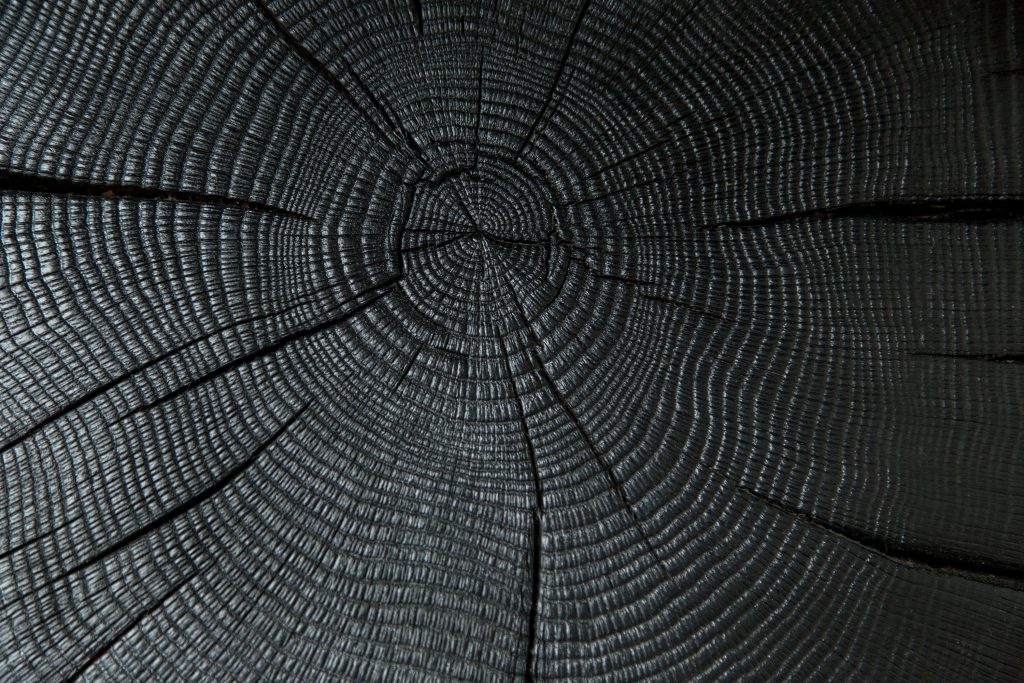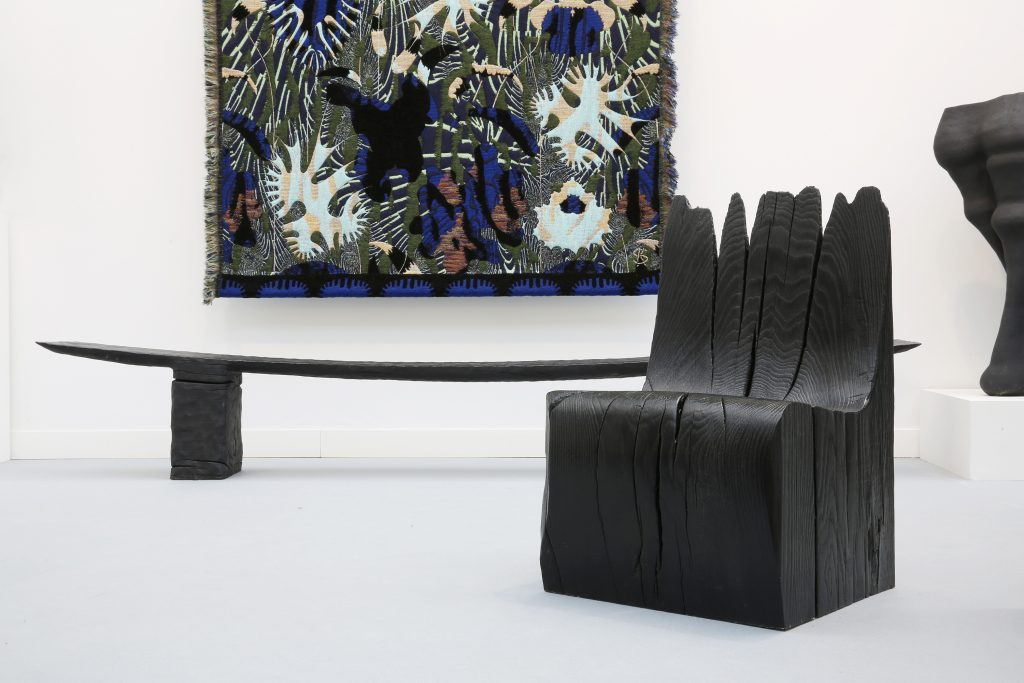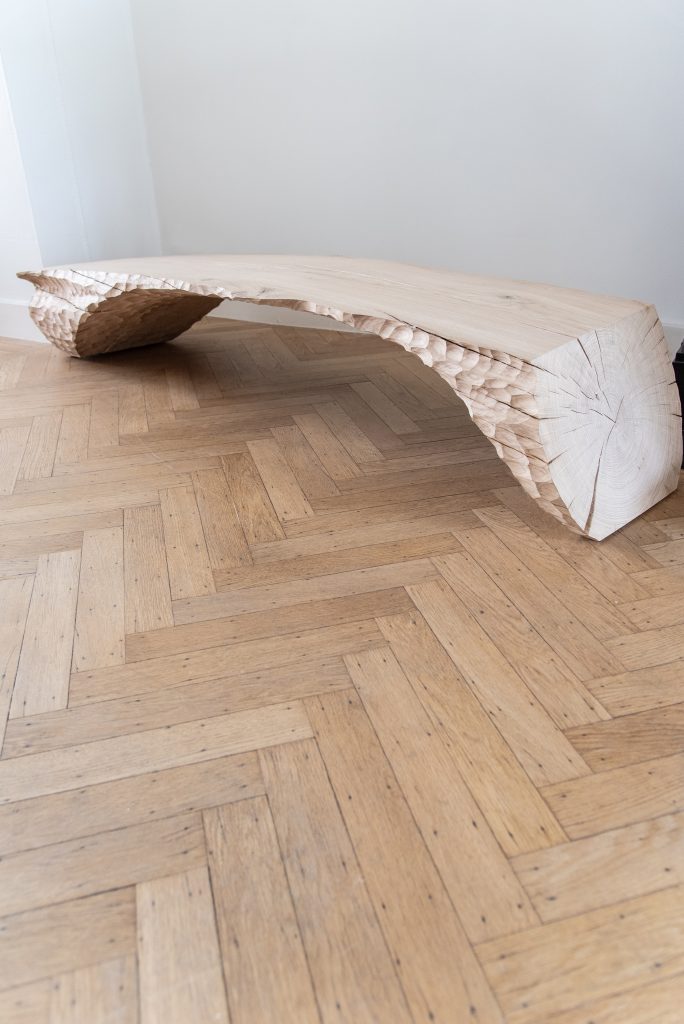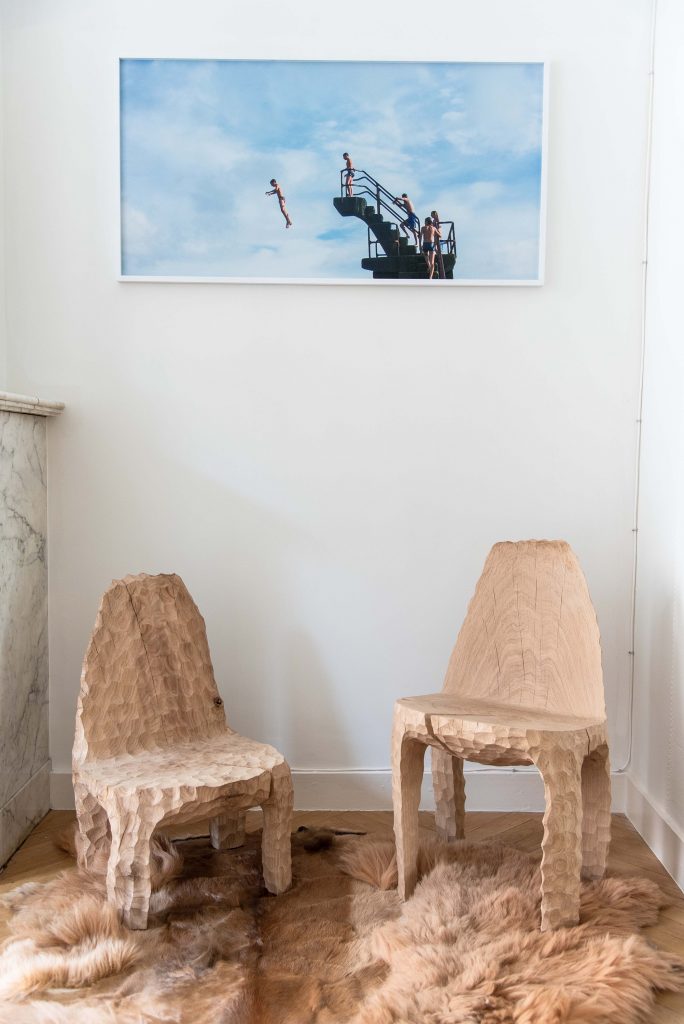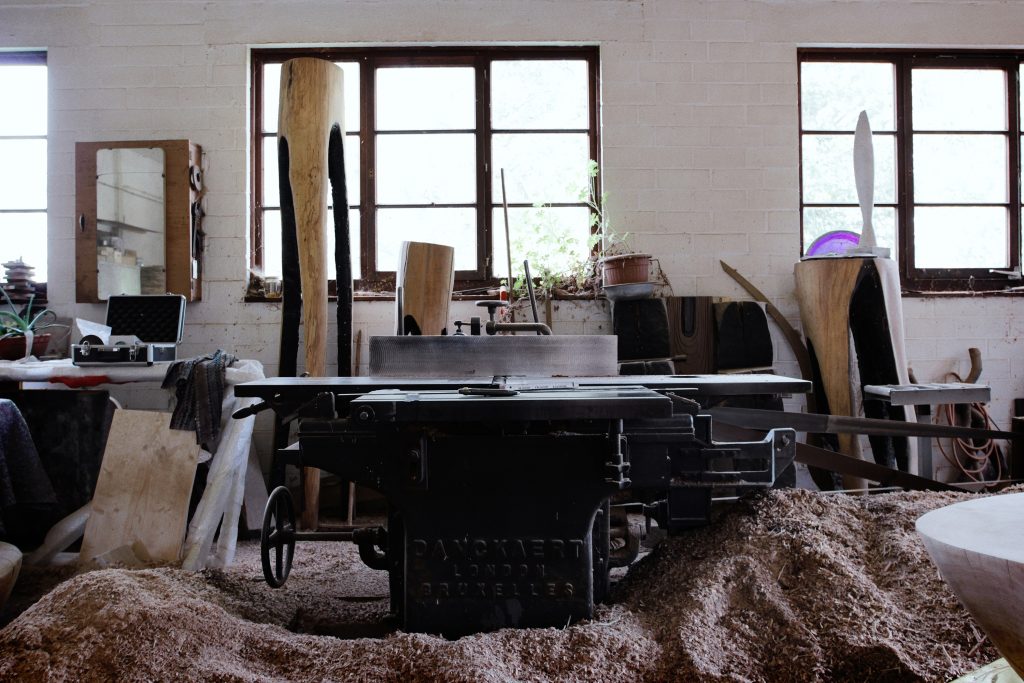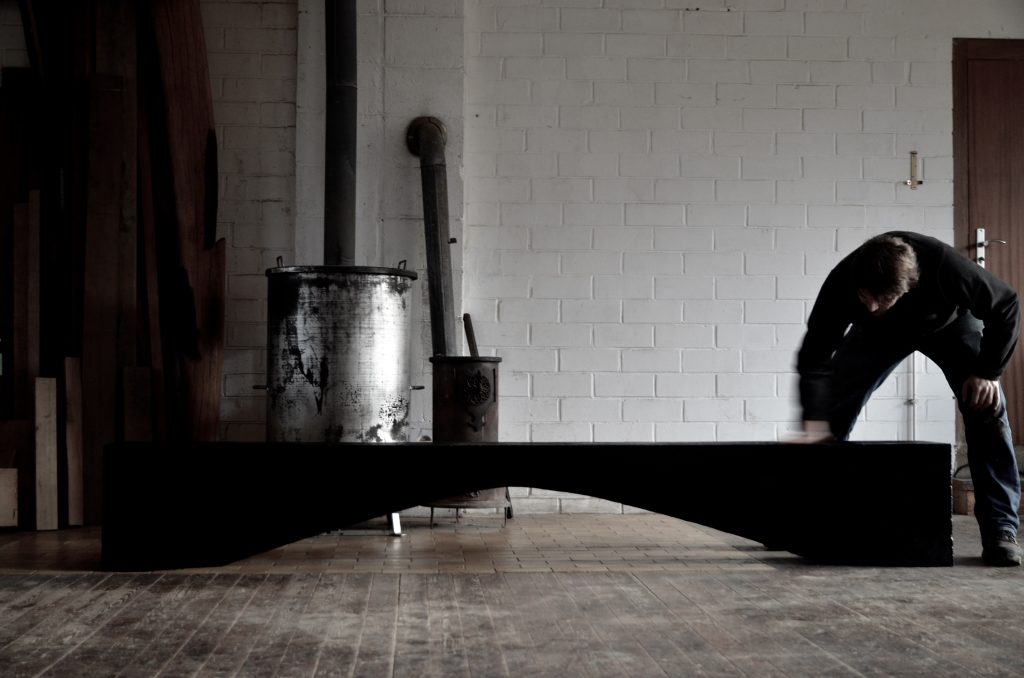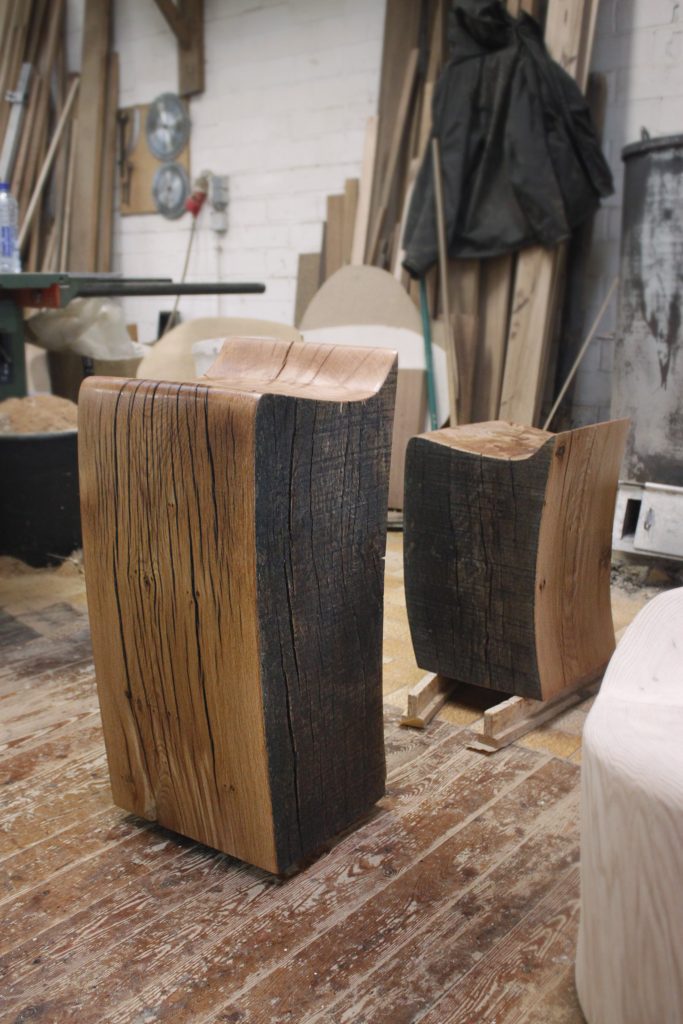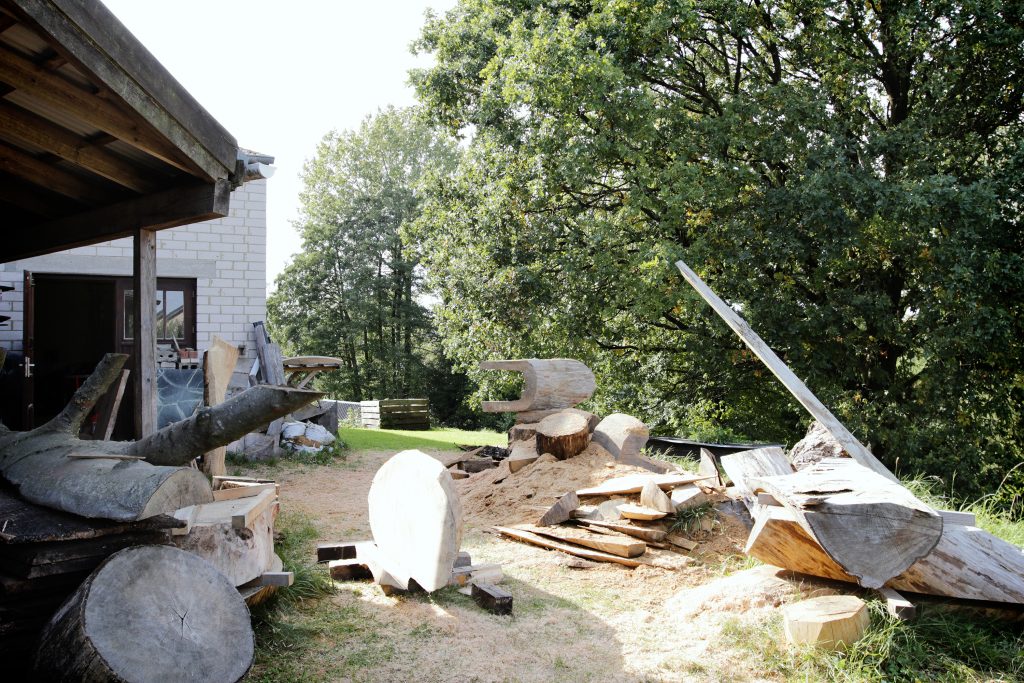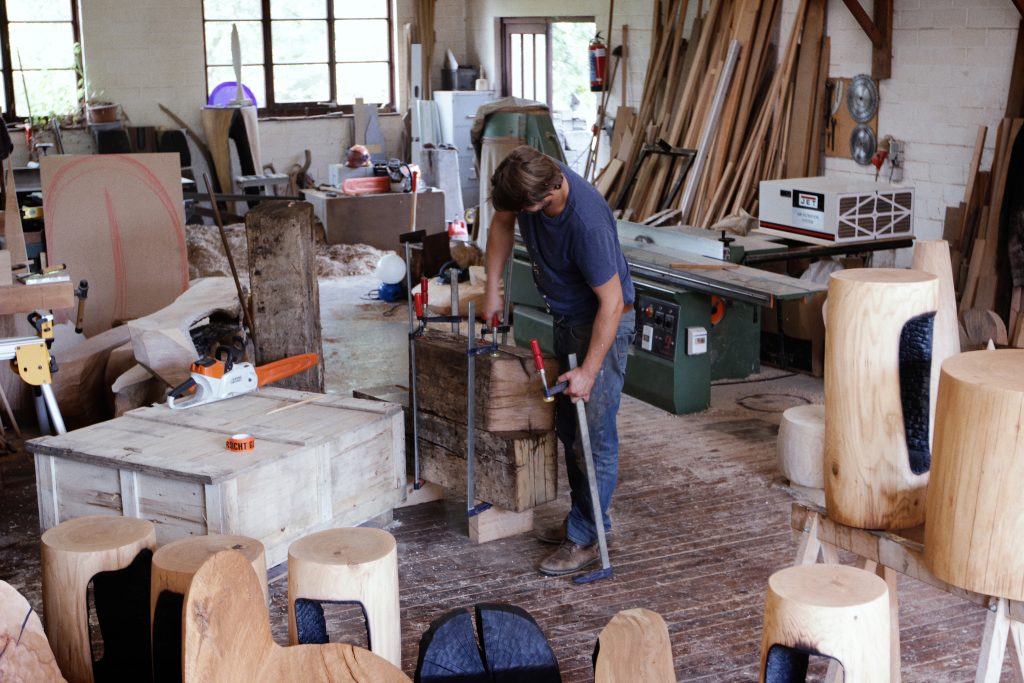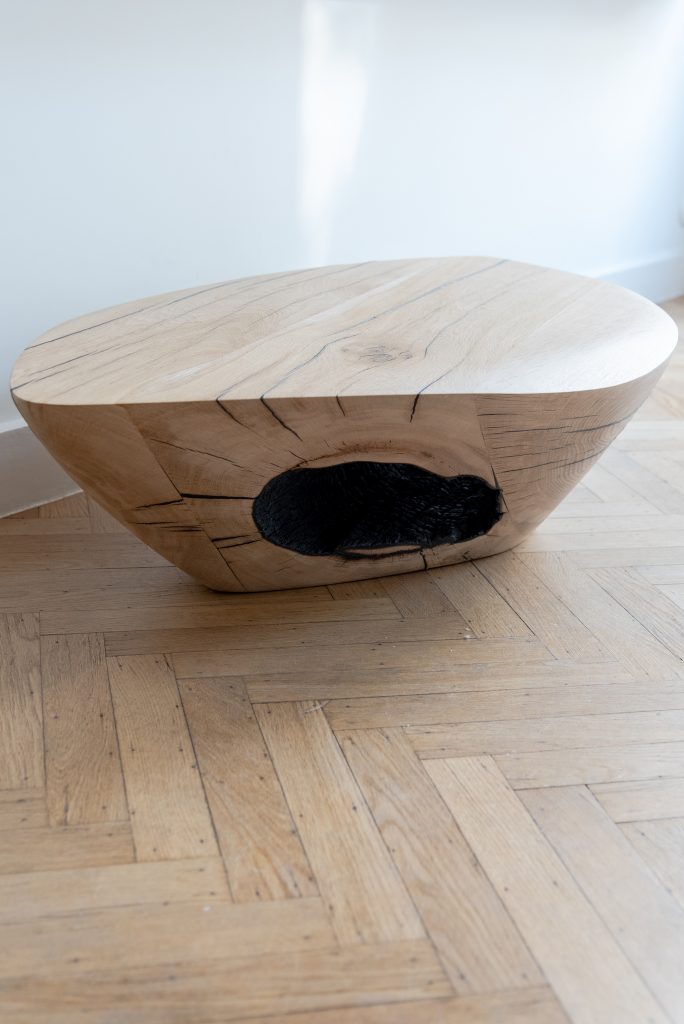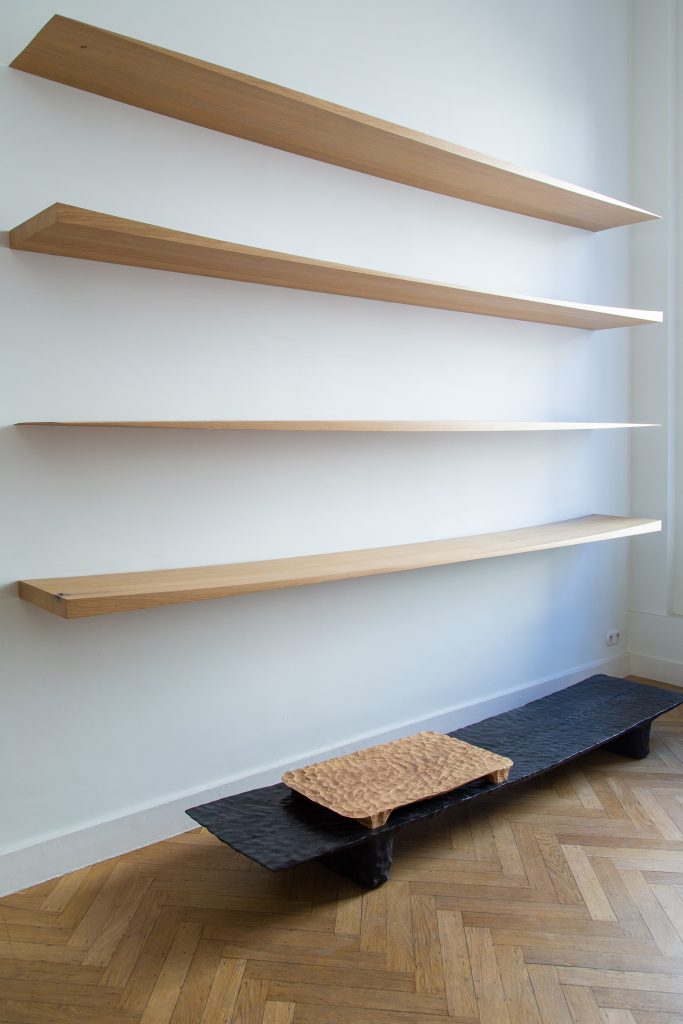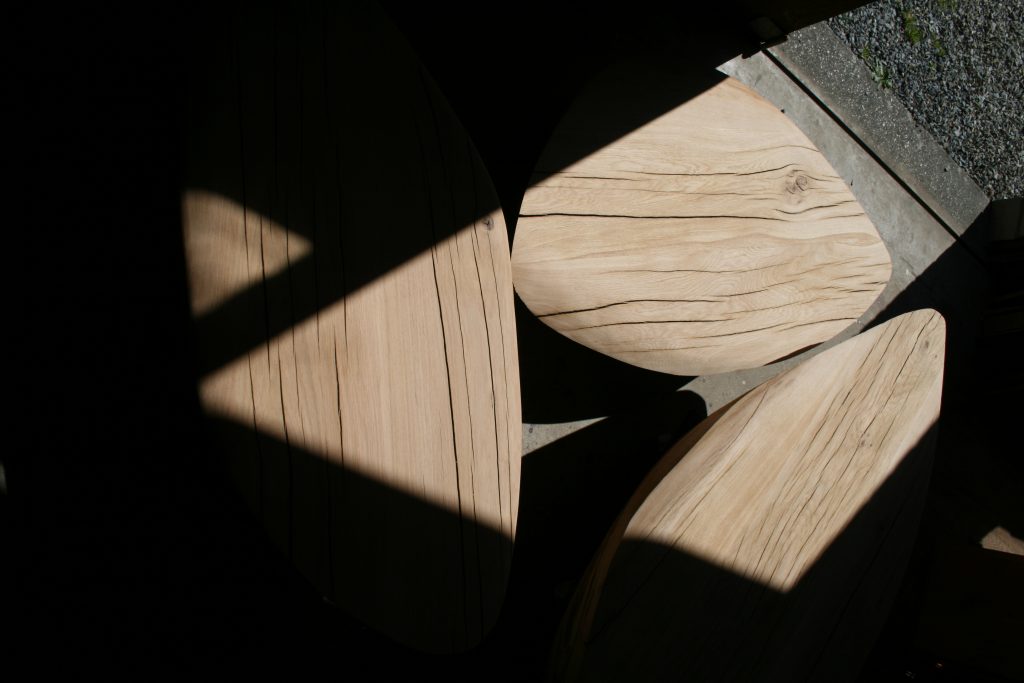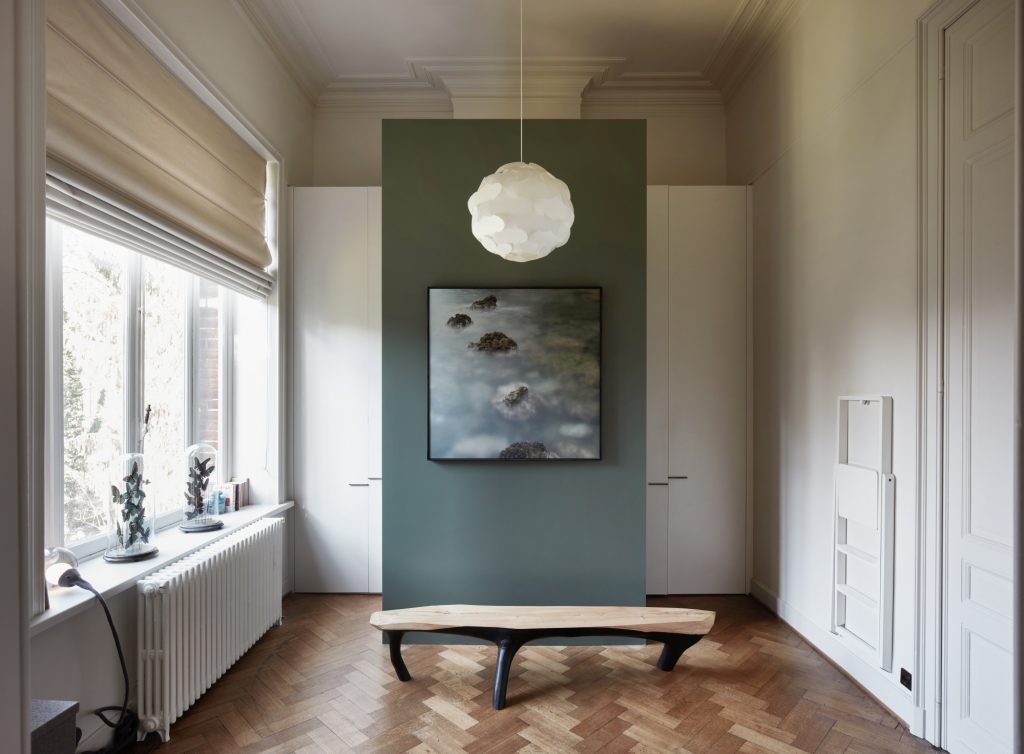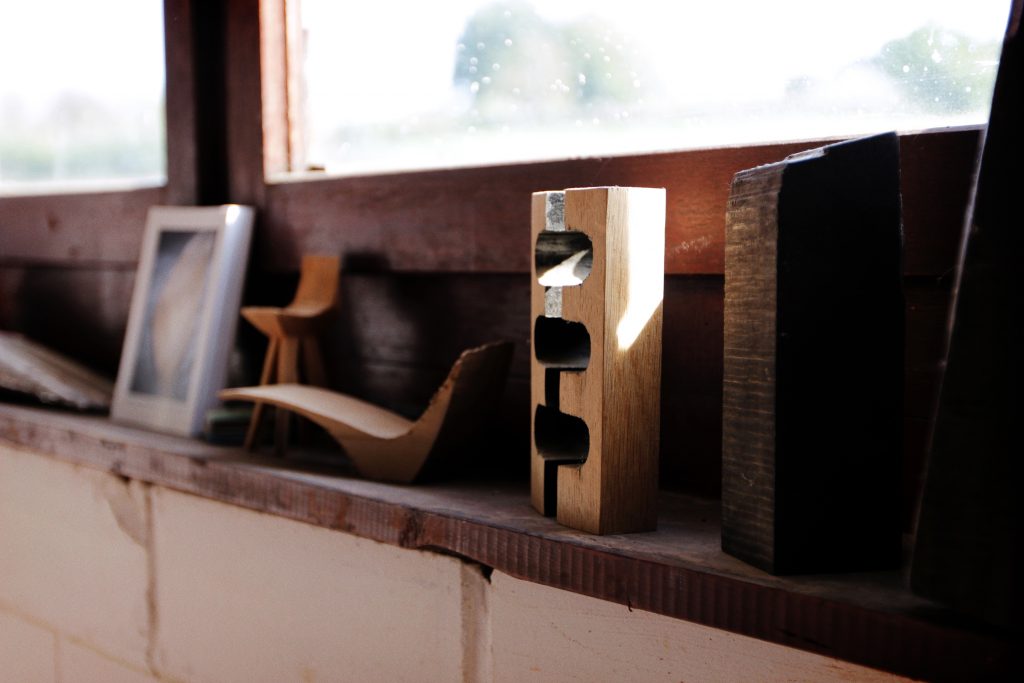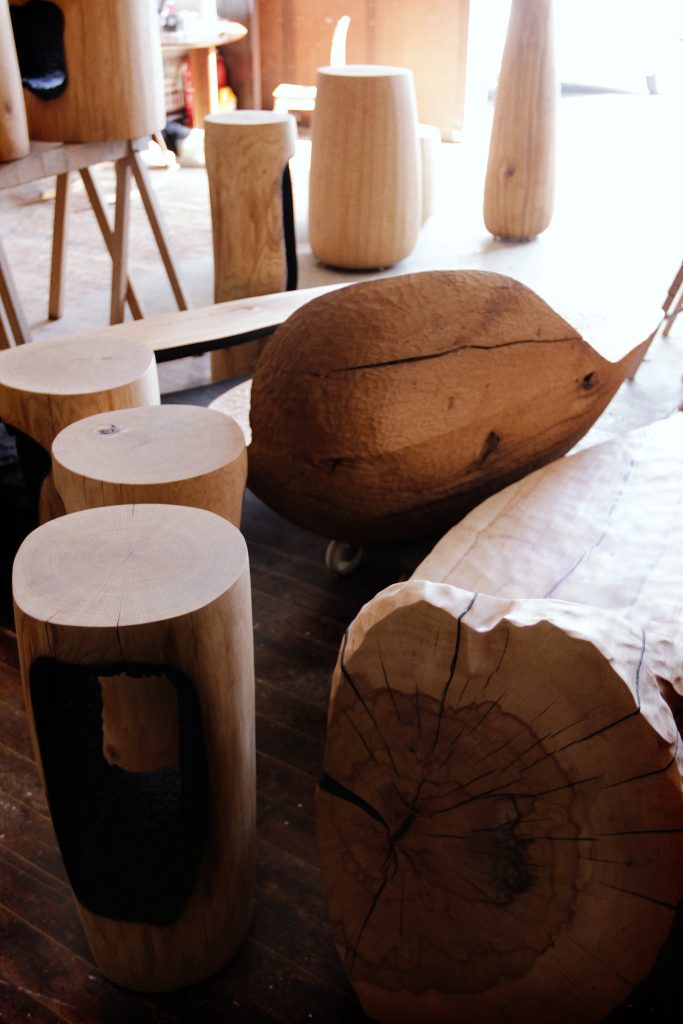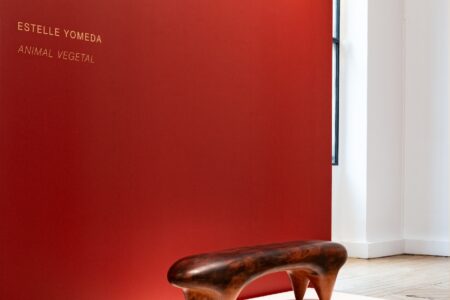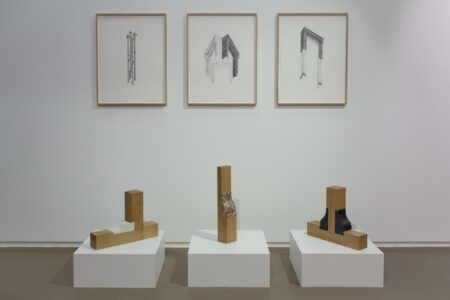Kaspar Hamacher: Monoxyle Purity Blooming from Sylvan Beauty
Kaspar Hamacher creates a close and unique connection with each fragment of trunk he sculpts, crafting unique stamped pieces, from his own creative mastery.
Kaspar Hamacher has wood grains running through his blood. He grew up amongst the trees with his father working as a forester in Belgium’s East Cantons and has since carved out a unique space for himself in the world of art and design, sitting somewhere between sculpture and contemporary applied arts. Far from the rush of our digital world, Kaspar creates a direct and individual connection with every tree trunk fragment with which he works, creating pieces bearing his unique stamp, emerging out of his creative energy. His work is displayed at l’Ancienne Nonciature in Brussels during Spazio Nobile’s group show ‘Le Sacre de la Matière’.
TLmag: Tell us about your approach towards the exploration of carpentry and woodwork traditions, which started with your habit of collecting wood in the forest, but then developed more towards sculpture and design.
Kaspar Hamacher (KH): When I first started collecting wood, I used to find a piece of wood and then the idea appeared. But now I also look for specific pieces of wood because I have an idea. It works both ways. I look for really old, dead trees in the forest. I never cut good trees because they are wet and take a long time to dry before I can use them. I also search for old beams that are already dry and have been lying in barns for years, never used, to create beautiful pieces in aged oak such as the Japanese-style benches and tables created for Spazio Nobile. I sculpt them with the gauge, sometimes delicately burning them, and I finish by oiling and waxing the surfaces to bring out the tactility and grain.
TLmag: What happens after you have found the wood?
KH: When I start a new piece, it is really about co-creating together with the wood, which is a living material, about feeling its strengths and weaknesses, about using its knots and rings in order to highlight the strength and nobility. When I bring a new piece of wood in my workspace, I leave it for some time in a corner or against a wall to dry, or even outside sometimes. During this time, I have a long reflection about it, out of which emerges the idea that will give it shape.
TLmag: Explain to us the role of time in your process as a sculptor and designer
KH: Trees live in another atmosphere of time to us. They are really slow and so I want to transport my objects from generation to generation. They should live longer than humans. They should be timeless. That is the ideal that I pursue, which some might find naïve, but that is, regardless, well-rooted in a physical and environmental reality and reflects the aspirations of the young generation that is fighting to protect our planet Earth.
TLmag: During the long process of creating a piece, is there a particular moment that stands out for you?
KH: It is always hard to make the first cut with the chainsaw because the wood isalreadyso naturally beautiful and you can easily destroy that beauty. Sometimes I think it would be better just to leave the piece as it is but, in the end, I am always happy when I find the right way to make it even more beautiful or to make that beauty visible to those with the sensitivity to perceive it. But my work isn’t limited to the search for beauty or for functionality. I want my pieces to generate thought and a connection with nature. People often ask: Why does he burn it? Why has he hollowed out the tree trunk? It is a metaphor for what humans do to the planet, and its lasting impact.
TLmag: You do use fire in making some of your pieces. While it can be useful for ecological construction, such as in Japan where the burnt timber cladding, or Shou-Sugi-Ban, technique was developed, burning wood can also be destructive and uncontrollable. What is your opinion?
KH: I don’t think it is losing control but setting free. Letting the energy of the workshop, the fire, the wood and even the artist express itself, produces a unique alchemy. In my opinion, if you make things too rational you can’t achieve beauty because you are never surprised. I am also always surprised that there is more beauty there than I thought.
Save the Date:
Le Sacre de la Matière, group exhibition of Spazio Nobile at l’Ancienne Nonciature, Grand Sablon, Brussels (3 March to Summer 2020)
PAD Paris, Spazio Nobile, collective exhibition (19-25 October 2020)
Solo show Mother Earth, CID Hornu, Hornu (Mons) (June – October 2021)
